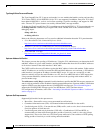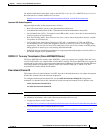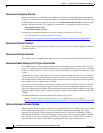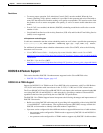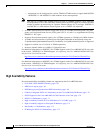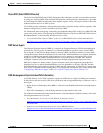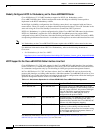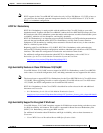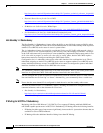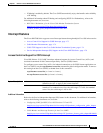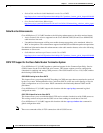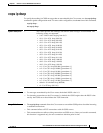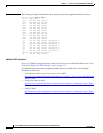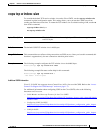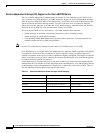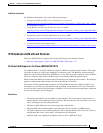
1-72
Cisco uBR7200 Series Universal Broadband Router Software Configuration Guide
OL-2239-05
Chapter1 Overview of Cisco uBR7200 Series Software
Supported Software Features for the Cisco uBR7200 Series
http://www.cisco.com/en/US/products/hw/cable/ps2217/products_technical_reference_chapter091
86a00805fd8fb.html
• Dynamic Shared Secret for the Cisco CMTS
http://www.cisco.com/en/US/products/hw/cable/ps2217/products_feature_guide09186a00801b17c
c.html
• IP Multicast in Cable Networks, White Paper
http://www.cisco.com/en/US/tech/tk828/technologies_case_study0900aecd802e2ce2.shtml
• N+1 Redundancy for the Cisco Cable Modem Termination System
http://www.cisco.com/en/US/products/hw/cable/ps2217/products_feature_guide_chapter09186a00
8015096c.html
Hot-Standby 1+1 Redundancy
The Hot-Standby 1+1 Redundancy feature offers the ability to provide high system availability when
configuring a Cisco uBR7200 series universal broadband router to wait in hot-standby mode to protect
another Cisco uBR7200 series router in case of system failure.
The 1+1 redundancy feature is essential in a residential Voice over IP (VoIP) cable network, since it
provides a three- to five-second automatic system recovery time, thus helping to eliminate “call drops”
in the VoIP cable network. System failure in a non-redundancy (unprotected) deployment results in loss
of all voice calls in progress as well as all voice calls in “setup” phase, because the CMTS requires
human intervention to reconfigure and bring the CMTS back online.
Configuration for 1+1 redundancy takes place at the cable interface line card interface level. That is,
rather than assigning an entire Cisco uBR7200 series router to support another Cisco uBR7200 series
router, individual interfaces on one Cisco uBR7200 series router are configured to protect individual
interfaces installed in a different Cisco uBR7200 series router.
Note 1+1 redundancy protection takes place only on an inter chassis basis. That is, you cannot protect cable
interfaces on a particular CMTS with cable interfaces installed in the same chassis.
You can configure the system to switch over automatically when the interface state of a cable interface
line card interface moves from “up” to “down.” Alternatively, you can manually force a switch over.
Note Ensure that the same channel ID is configured for both the active and the standby cable router.
For more information on the 1+1 redundancy feature, including information on configuration tasks and
command reference, refer to the document on Cisco.com:
• Hot-Standby 1+1 Redundancy
http://www.cisco.com/univercd/cc/td/doc/product/software/ios121/121newft/121limit/
121ec/121ec3/hccpfeat.htm
IF Muting for HCCP N+1 Redundancy
Beginning with Cisco IOS Release 12.2(15)BC2a, Cisco supports IF Muting with both SNMP and
non-SNMP-capable upconverters in HCCP N+1 Redundancy. IF Muting offers the following benefits:
• IF Muting for either type of upconverter significantly increases the N+1 protection schemes that are
available for Cisco CMTS headends.
• IF Muting offers the additional benefit of being faster than RF Muting.



